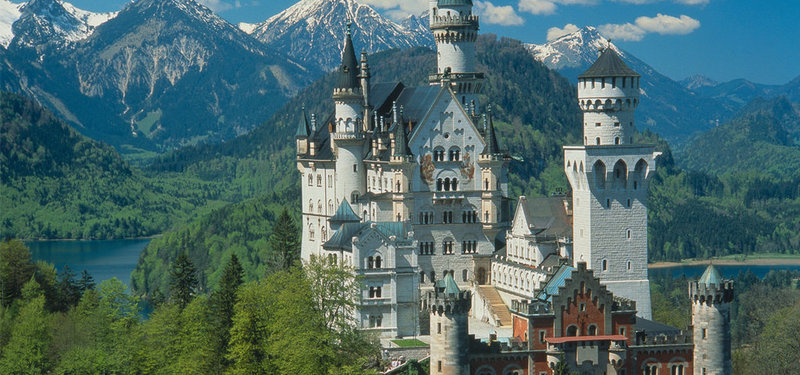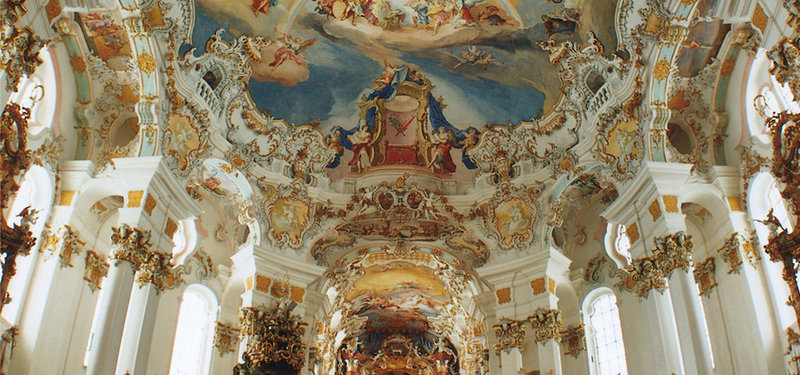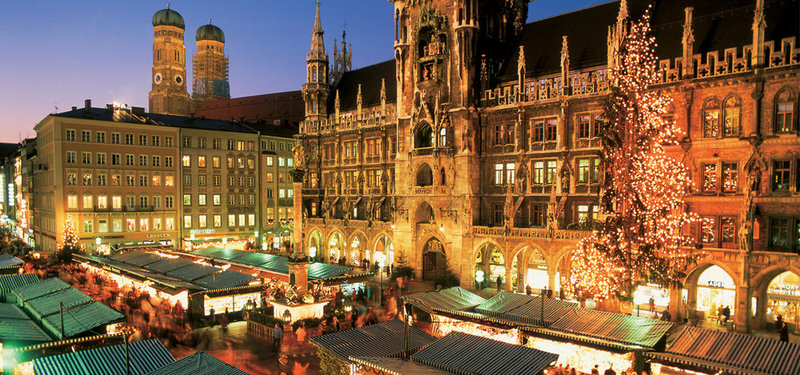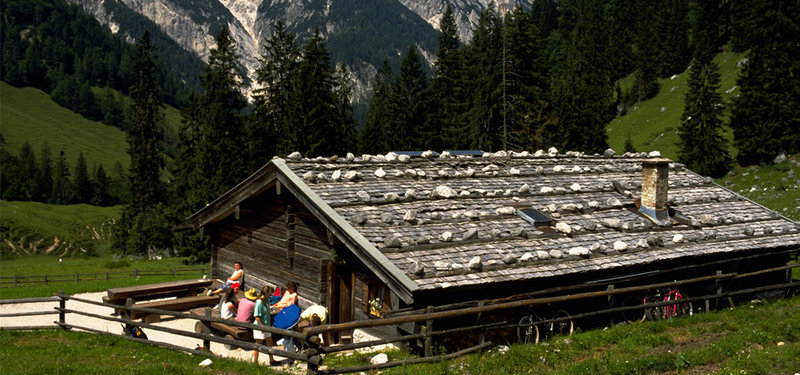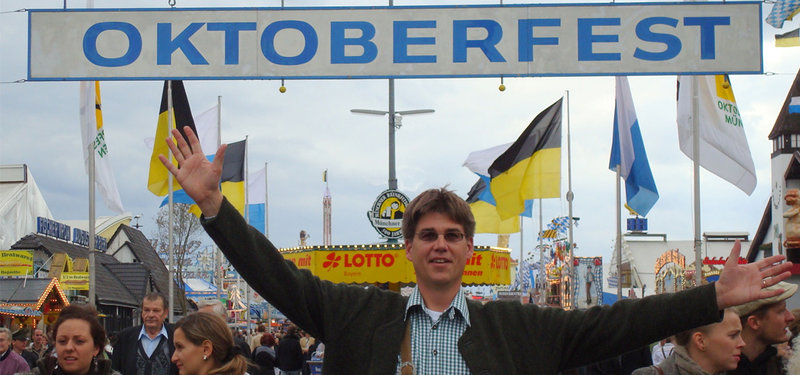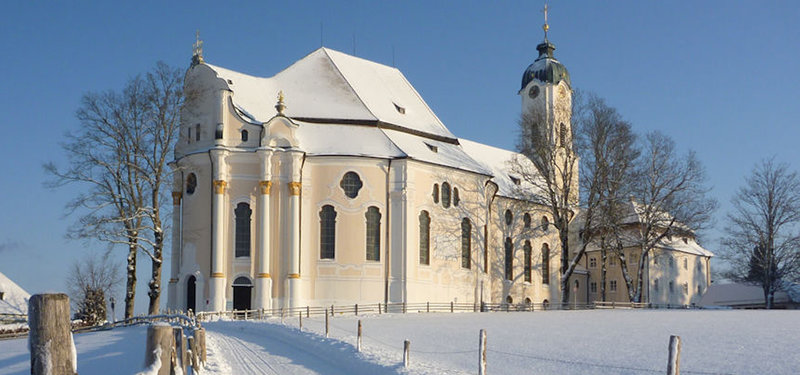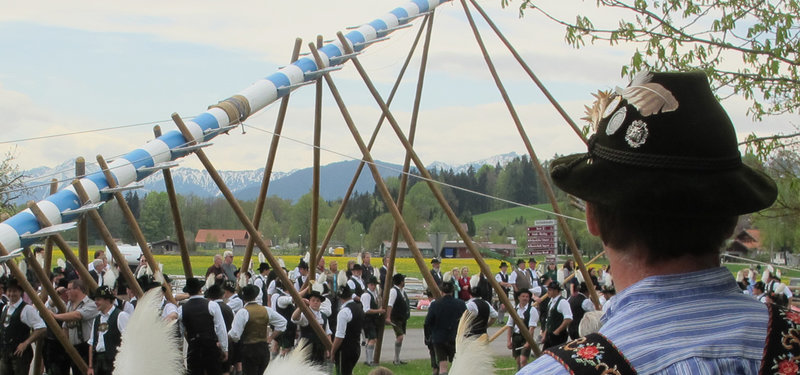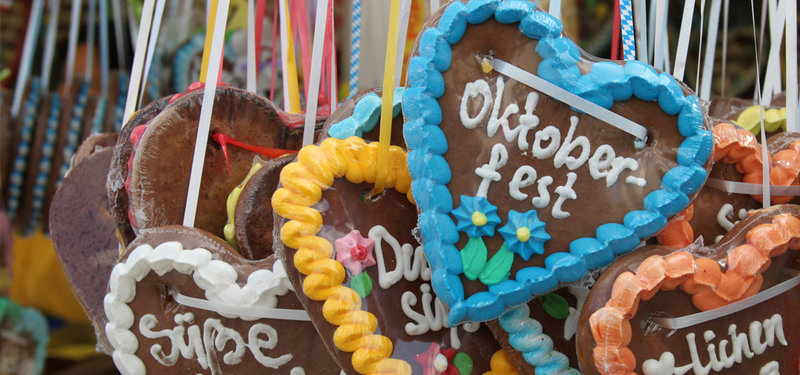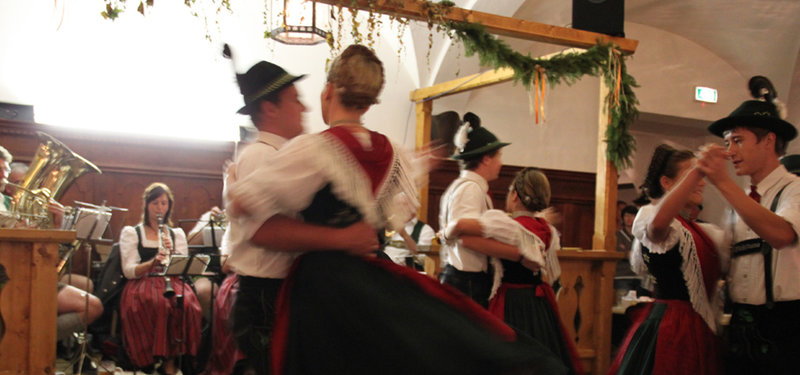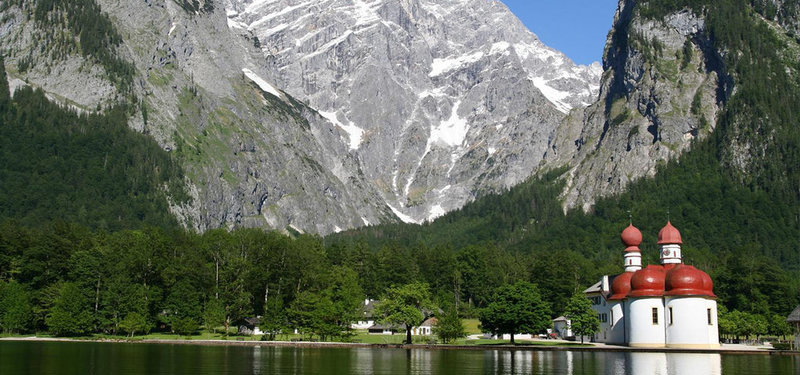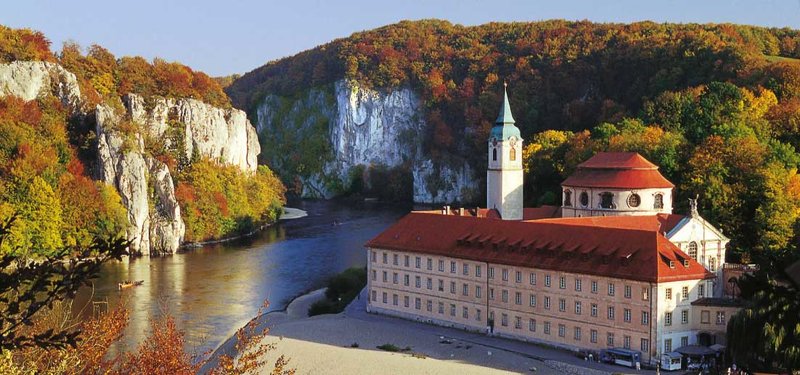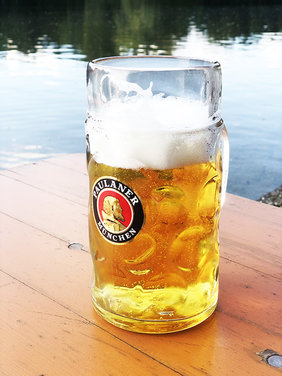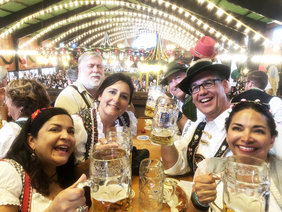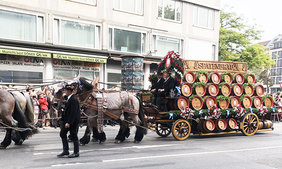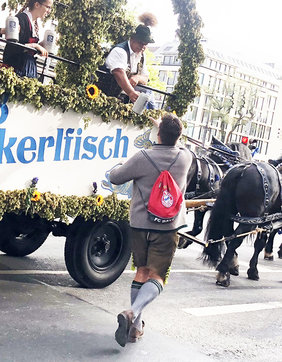Oktoberfest Bier
Wielding a large mallet, the major of Munich takes a mighty swing (or two or three) to tap the keg of Oktoberfest beer, thus marking the festival’s official start. Then it’s two solid weeks of fun as some 7,000,000 liters of beer are consumed – that’s almost 2 million gallons!
Is Märzen- and Oktoberfest- beer the exact same thing? In German, “jein-” Yes and no. Märzenbier, Oktoberfestbier, and the Vienna Lager are all closely related. In Germany though, only the six Munich breweries who are allowed to serve beer at the Oktoberfest can call their beer “Oktoberfest Beer.” (Beerwulf B.V., 2019) (Beer Styles from Around the World, 2015)
Historically, Märzenbier referred simply to beer made in March. In German, the word is März or Maerz. In 1553 the Bavarian Duke, Albrecht V, forbade the brewing of beer in the summer. Beers brewed in summer were often spoiled by ambient bacteria which turned the beer sour. Thus, brewing between the days of Georgi (April 23) and Michaeli (September 29) was verboten. Brewers had to work overtime during March and brewery a stronger beer for consumption during the summer months. There was a weaker Winterbier and a stronger Sommerbier. The weaker winter beer had a lower quality and was cheaper. Starting March 1, the stronger summer beer was available. More hops and more malt led to a stronger beer with a longer “shelf-life.” (Reichl, 2006)
In the late 1700`s there was an extraordinarily complex system for determining who could serve Märzenbier first in the summer. During the summer, when brewing was banned, there was a drawing for two brewers. One brewer represented the northern parish of Our Lady (die Frauenkirche) and the other the southern parish of St Peter. The border was Tal, Kaufinger and Neuhausergasse, now the main pedestrian zone in the old town. The chosen brewers would brew a five-day supply and this beer would be served in all outlets in their area. Just as supply dried up, a “Hop Crown” would pass to the next brewer in line until everyone had their chance. This took quite some time for the 52 breweries! (Assel & Huber, 2012)
It wasn’t until 1841 when the Spaten Brewery produced the first lager which was officially labeled as a Märzenbier. At the same time, the Dreher Brewery in Schwechat, an outer suburb of Vienna, released a similar beer, but called it a Vienna Lager. My previous article about Brewery Spies describes this in greater detail. During Oktoberfest 1871 the Franziskaner-Leist brewery ran out of Sommerbier and sold the “new and improved” Märzenbier instead of turning to the weaker Winterbier. (Assel & Huber, 2012). In spite of its higher price, the Märzenbier was a hit and Spaten became the first to use the name, Oktoberfestbier, which was specifically brewed for the 1872 Munich Oktoberfest. (Seidl & Dornbusch, 2012)
As well as being historically related, these beers are also technically similar. Most of the base malt used in these beers is Munich malt, although Vienna Malt is largely used for the Vienna Lager. This results in a golden amber color for Märzen/Oktoberfest and a reddish tint in the Vienna Lager. Early on, the Munich beers were much darker, but the Munich brewers have moved toward lighter and lighter versions. (Seidl & Dornbusch, 2012)
Officially speaking, a Märzen must have an original gravity of 13, while an Oktoberfest beer starts at 13.5. This results in a range of alcohol per volume of 4.8 to 5.6%. Rounding out the official description by the German Brewing federation, it is a subtle, malt-toned, strong, easy drinking beer with light hop bitterness. And, officially, it must use bottom fermented yeast and is thus a lager. (Gesellschaft für Öffentlichkeitsarbeit der Deutschen Brauwirtschaft e. V. (GfÖ), 2020). Schneider und Söhne, however, did brew a top fermenting ale for Oktoberfest. Schneider was a Munich-based brewery before the destruction of their brewery in downtown Munich – today’s Schneider Bräuhaus in Tal 7. Being based in Munich allowed Schneider to sell their beer at the festival, even though their beers are all top-fermented ales. They used 60% Wheat and 40% Barley malt in their brew and the original gravity had to hit at least 13.5
Only Munich breweries can sell their beer at Oktoberfest. The field is therefore just the “Big six” of Munich: Augustiner, Hofbräu, Paulaner, Hacker-Pschorr, Löwenbräu and Spaten. Festivities start when the mayor taps the keg in the Schottenhammel Tent – the oldest tent on the Wiesn and server of Spaten beer. Schneider had the advantage of brewing an ale -- they could wait until the end of August to start their production and their goal was to empty out the hop cellar with whatever was left before the new harvest came in. Given also that they used older hops at that point, there was always a light lemony taste. Since the amount of hops used each year could vary significantly, the beer tasted quite different year to year. The current owner of the brewery, George VI, talked to his grand father and tried to recreate this beer when George VI was studying at Weihenstephan. You can taste the results of his work if you try Schneider’s Tap 4 “Meine Festweisse” and you can watch George describe in the process in one of his videos here. (Eine Schneider Weisse-Bierreise mit Georg VI. Schneider, 2013)
By looking at the beer sales statistics, you can see the growth of Oktoberfest in the past few decades. 2017 & 2018 were recorded setting years with 7,500,000 liters each year. In 2019, sales were down just a tick at 7,400,000. Contrast this with sales in 1980 at “just” 3,840,000 and you can see how Munich’s Oktoberfest has grown. There was a substantial drastic downturn in 2001 due to the 9/11 attack and it took 4 more years before sales volume was back up to its previous level. We expect that Oktoberfest 2021 may play out in similar fashion due the to the COVID-19 crisis. (Graefe, 2020)
Beer Price is hot topic of discussion every year. The locals lament the spiraling costs of a liter of Oktoberfest beer. In 2019 the price per liter was between € 10.80 and € 11.80, plus tip. Currently in downtown Munich, we can get a liter for around €7.50. Just 10 years before that, in 2009, the price was between € 8.10 and € 8.60. (Statista Research Department, 2020)
The other hot topic is the quality of pour. The Augustiner Tent is the only one that still serving from a wooden cask. These massive kegs, called “Hirschen,” contain 200 liters of beer. With 6,000 people inside the tent and 2,500 in the beer garden, this 200-liter Hirsch lasts an average of 12 minutes! (Gussman & Wacker-Gussmann, 2015) Sadly, there is often criticism that the mugs are not as full as they should be. There is a line on each glass mug indicating a full one liter. There is actually an organization dating from 1899 called the “Verein gegen betrügerisches Einschenken” – In English, The Association Against Fraudulent Pouring. In 2012 they tested 96 liters in the major tents. No tents managed to get better than 94% of a liter and only 3 tents had at least a 90% pour. (Verein gegen betrügerisches Einschenken e.V., 2012). Technically, you can send a badly poured Krug back. However, I doubt you’ll ever get your server to being you another one, so I can’t suggest trying it!
When you think of Oktoberfest, I bet you picture a beautiful Dirndl wearing woman with her arms full of beer. How many liters of beer can be carried? A full liter weights 2.2 Kg or 4.85 Lbs. In 2017 a waiter at the Gilamoos Festival in Abensberg set the world record by carrying 29 liters of beer! To qualify as a record, you must manage a minimum distance of 40 meters and spill less than 10% of the beer. (Gussman & Wacker-Gussmann, 2015)
Pronounce Märzen like a Germans: https://www.youtube.com/watch?v=WzAddfq4wZ0
Join us in 2021 at famous Oktoberfest. Now taking reservations!
Works Cited
Assel, A., & Huber, C. (2012). München und das Bier. (S. Stephens, Übers.) München: Volk Verlag München.
Beer Styles from Around the World. (2015). West Newbury, MA: Cervisia Communications.
Beerwulf B.V. (2019, August 12). Bierwulf . Retrieved from BIERSORTEN IM ÜBERBLICK: ALLE BIERSTILE VON A BIS Z: www.beerwulf.com/de-de/artikel-uber-craft-bier/biersorten-bierstile-ueberblick
Dornbusch, H. (1997). Prost! The Story of German Beer. Biulder, CO: Brewers Publications, Division of the Association of Brewers.
Eine Schneider Weisse-Bierreise mit Georg VI. Schneider (2013). [Kinofilm]. Germany. Von www.youtube.com/watch abgerufen
Eymold, U. (2015). Bier Macht München. München: Süddeutsche Zeitung.
Gesellschaft für Öffentlichkeitsarbeit der Deutschen Brauwirtschaft e. V. (GfÖ). (2020, September 8). Deutsche Biere: Einzigartige Sortenvielfalt . Retrieved from www.brauer-bund.de: www.brauer-bund.de/download/Archiv/PDF/deutsche_biere.pdf
Giesinger Umfahrer GbR. (n.d.). Märzenbier – ein Bier mit Tradition . Retrieved from BierEntdecken: www.bier-entdecken.de/marzenbier-ein-bier-mit-tradition/
Graefe, L. (2020). Ausgeschenkte Menge Bier auf dem Oktoberfest in München von 1980 bis 2019.
Retrieved from Statistik: de.statista.com/statistik/daten/studie/165503/umfrage/ausgeschenkte-menge-bier-auf-dem-oktoberfest-seit-1980/
Gussman, G., & Wacker-Gussmann, A. (2015). Münchener Oktoberfest 333 Interessante Fackten. Steinenbronn: Scribo Verlag.
Reichl, D. (2006). Bier Geschichte und Geschichten. Bad Aibling, Bayern, Deutschland: KULTURHISTORISCHER VEREIN FELDMOCHING auf dem Gfild e.V.
Seidl, C., & Dornbusch, H. (2012). Märzenbier. In G. Oliver (Ed.), The Oxford Compantion to Beer (pp. 573-574). New York, NY: Oxford Univestiy Press.
Statista Research Department. (2020). Bierpreisentwicklung auf dem Oktoberfest in München bis 2019.
Retrieved from Statista : de.statista.com/statistik/daten/studie/272209/umfrage/bierpreisentwicklung-auf-dem-oktoberfest-in-muenchen/
Verein gegen betrügerisches Einschenken e.V. (2012, September 26). VGBE - Nachrichten . Retrieved from Verein gegen betrügerisches Einschenken e.V.: vgbe.org/nachrichten.html
